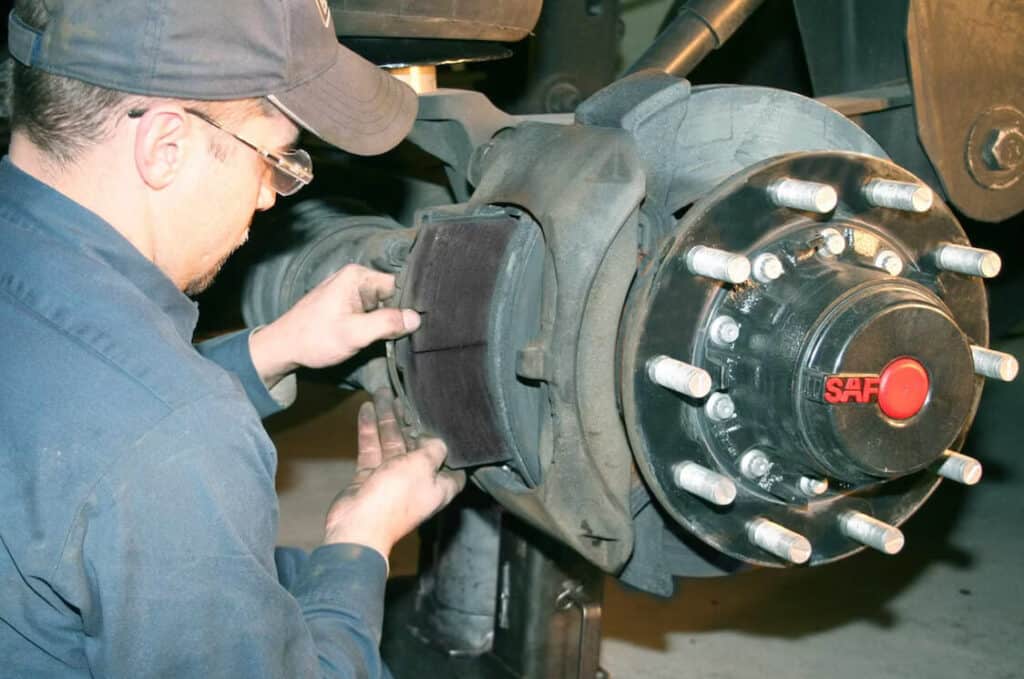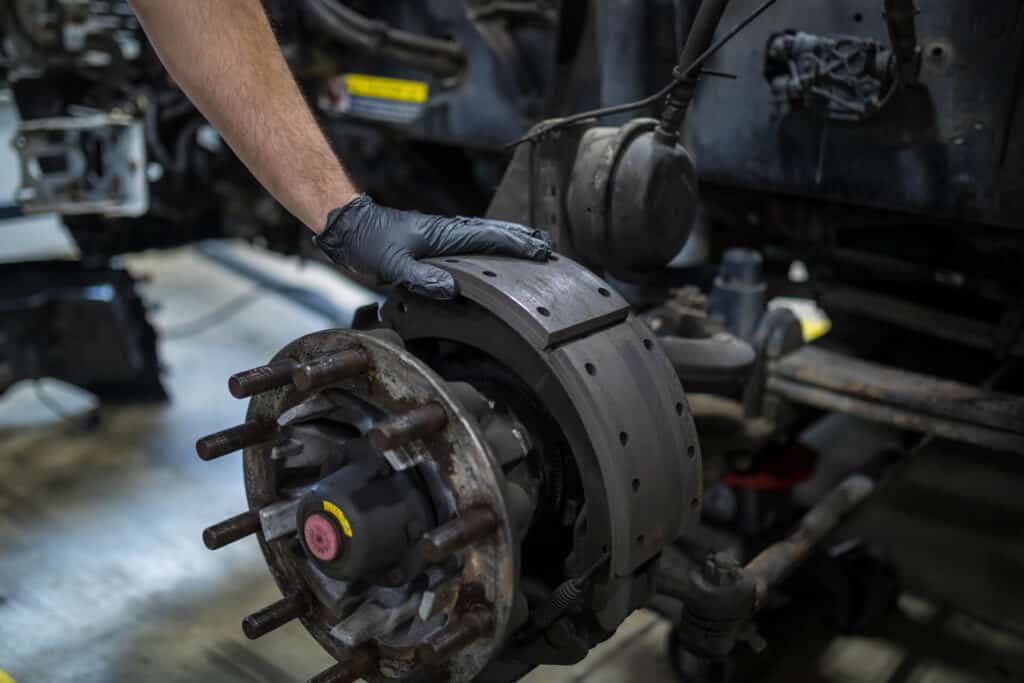Introduction: Ensuring Fleet Vehicle Compliance Through Brake System Inspections
Brake system inspections play a crucial role in maintaining fleet vehicle compliance and safety. Regular inspections help fleet managers ensure that their vehicles meet regulatory requirements while also identifying and addressing potential brake system issues before they become critical. This article will explore the importance of brake system inspections for fleet vehicle compliance and provide guidance on conducting thorough inspections, record-keeping, and developing a fleet-wide inspection schedule.
Regulatory Requirements for Fleet Vehicle Brake System Inspections
Federal Regulations
At the federal level, the Federal Motor Carrier Safety Administration (FMCSA) sets standards for commercial motor vehicles’ brake system maintenance and inspections. These regulations apply to vehicles involved in interstate commerce and outline the necessary brake system components, performance requirements, and inspection procedures.
State/Provincial Regulations
In addition to federal regulations, fleet vehicles may also be subject to state or provincial regulations. These requirements can vary from jurisdiction to jurisdiction, so it is essential to familiarize yourself with the specific regulations applicable to your fleet operations.
Local Regulations
Local regulations may also impact fleet vehicle brake system inspections, particularly for vehicles operating within specific municipalities. These regulations may include additional requirements or more frequent inspection schedules, so it is crucial to stay informed about local regulations to ensure compliance.

The Role of Brake System Inspections in Maintaining Fleet Vehicle Safety
Regular brake system inspections are essential for maintaining fleet vehicle safety. They help identify and address potential issues before they escalate, reducing the risk of accidents and vehicle downtime. By staying proactive with brake system inspections, fleet managers can ensure their vehicles remain in safe, compliant condition.
Common Brake System Issues Identified During Inspections
Worn Brake Pads or Shoes
Over time, brake pads or shoes can wear down, compromising the vehicle’s braking performance. Inspections help identify excessively worn pads or shoes that require replacement.
Damaged or Warped Rotors
Heat, rust, or warping can damage brake rotors, affecting their performance and potentially leading to brake failure. Regular inspections can help detect rotor issues early and prevent costly repairs.
Leaking Brake Fluid
Low brake fluid levels can cause a reduction in braking power and may lead to brake system failure if not addressed promptly. Inspections can identify leaks and ensure fluid levels are maintained.
Malfunctioning Brake Components
Brake system components, such as calipers, master cylinders, or wheel cylinders, can malfunction or fail. Inspections can help detect these issues early, ensuring timely repairs and minimizing the risk of brake failure.
Conducting Thorough Brake System Inspections: What to Look for
Visual Inspection
A visual inspection of the brake system should include checking brake pads or shoes for wear, examining rotors for damage, and looking for signs of fluid leaks or damaged components.
Functional Testing
Functional testing of the brake system involves checking pedal travel, brake booster operation, and parking brake functionality, among other tests, to ensure optimal performance.
Diagnostic Tools and Procedures
Diagnostic tools, such as brake fluid testers, digital calipers, or electronic diagnostic equipment, can provide valuable information about the brake system’s condition and help identify potential issues.
Record-Keeping and Documentation for Brake System Inspections
Inspection Reports
Documenting brake system inspections through detailed inspection reports is essential for maintaining compliance and providing a historical record of vehicle maintenance.
Repair and Maintenance Records
Maintaining records of brake system repairs and maintenance helps track component replacement intervals and identify patterns of recurring issues.
Driver Vehicle Inspection Reports (DVIR)
DVIRs are a crucial component of fleet vehicle compliance, allowing drivers to report any brake system issues or concerns that may require further inspection or repair.
Training Fleet Drivers and Technicians on Brake System Inspection Procedures
Fleet drivers and technicians should receive training on brake system inspection procedures to ensure thorough, consistent inspections and early detection of potential issues.

Developing a Fleet-Wide Brake System Inspection Schedule
Factors Influencing Inspection Frequency
Several factors influence the frequency of brake system inspections, including the type of vehicles in your fleet, driving conditions, and mileage. Regularly assessing these factors can help determine the optimal inspection schedule for your fleet.
Coordinating Inspections with Other Maintenance Activities
To maximize efficiency and minimize vehicle downtime, consider coordinating brake system inspections with other scheduled maintenance activities, such as oil changes, tire rotations, or preventative maintenance checks.
The Consequences of Non-Compliance with Brake System Inspection Regulations
Non-compliance with brake system inspection regulations can lead to a range of negative consequences, beginning with substantial fines and penalties that can hurt your company’s bottom line. In some cases, failure to adhere to these regulations may even result in legal action. In addition to the financial repercussions, neglecting to conduct regular brake system inspections can heighten the risk of accidents. Undetected issues may compromise the safety of not only your drivers but also other road users, potentially causing accidents with severe consequences.
Furthermore, non-compliance with brake system inspection regulations can have a lasting impact on your company’s reputation. This damage can lead to lost business opportunities as clients and customers may hesitate to trust a company that does not prioritize safety and regulatory compliance. The resulting negative public perception can be difficult to overcome, making it crucial to ensure regular brake system inspections are conducted to maintain compliance and protect your company’s reputation in the long term.
Conclusion: Prioritizing Brake System Inspections for Fleet Vehicle Compliance and Safety
By prioritizing brake system inspections, fleet managers can ensure their vehicles remain compliant with all applicable regulations while maintaining optimal safety standards. By understanding the different regulatory requirements, conducting thorough inspections, and implementing a fleet-wide inspection schedule, fleet managers can minimize the risk of non-compliance, reduce accident risk, and protect their company’s reputation. Proactive brake system maintenance is an investment in the long-term success and safety of your fleet operations.
